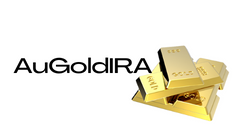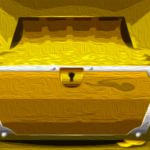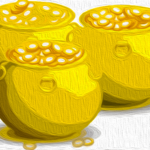Hey there, crypto enthusiasts! Today, we're diving into the recent rollercoaster ride of the Bitcoin market. Just a couple of weeks back, Bitcoin was soaring high above $126,000, but now it has taken a nosedive, settling around $104,000. Let's unravel what's been going on and what it means for investors like you.
The Bitcoin Fear & Greed Index: A Window into Market Sentiment
Let's talk about the Bitcoin Fear & Greed Index, a handy tool that reflects investor sentiment. Currently standing at 22/100, it has plunged into the 'Extreme Fear' zone. This shift indicates a cautious market stance and can hint at potential turning points. It's like a mood ring for the crypto world!
Market Reaction to Global Events
Remember the recent market turmoil triggered by President Trump's tariff announcements and China's restrictions? This led to a significant sell-off, with Bitcoin and other cryptocurrencies taking a hit. Now, Bitcoin is struggling to recover from that blow, dragging the broader crypto market down with it.
Analyzing the Possibility of Further Declines
With Bitcoin dipping below $105,000, concerns about a deeper correction are looming large. Traders are eyeing potential slides into the $90,000s or even $80,000s. Technical indicators are flashing warning signs, hinting at a weakening momentum and the possibility of a prolonged downturn.
Interpreting Market Indicators
Indicators like the Relative Strength Index and the Average Directional Index are painting a bearish picture. The emergence of a 'death cross' pattern on charts is ringing alarm bells, indicating a challenging road ahead for Bitcoin prices.
Navigating Uncertainty in the Crypto Landscape
Amid global economic uncertainties, Bitcoin's price struggles mirror the broader market trends. Geopolitical tensions and monetary policy discussions are keeping investors on their toes. The recent shift from 'greed' to 'fear' in market sentiment showcases the unpredictable nature of the crypto world.
Comparing Asset Performance
While Bitcoin is facing headwinds, gold has been on a winning streak, hitting record highs. The contrasting performance of these assets highlights the evolving dynamics in the financial landscape. It's a tug of war between traditional and digital assets.
As we navigate these turbulent times in the crypto sphere, staying informed and cautious is key. Keep a close eye on market indicators, remain adaptable to changing trends, and remember, in the world of cryptocurrencies, fortune favors the vigilant. Happy trading!
Frequently Asked Questions
Can I have a gold ETF in a Roth IRA
While a 401k may not offer this option for you, it is worth considering other options, such an Individual Retirement Plan (IRA).
Traditional IRAs allow contributions from both the employer and employee. Another option is to invest in publicly traded corporations with an Employee Stockownership Plan (ESOP).
An ESOP is a tax-saving tool because employees have a share of company stock as well as the profits that the business generates. The money in the ESOP can then be subject to lower tax rates than if the money were in the individual's hands.
Also available is an Individual Retirement Annuity. An IRA allows for you to make regular income payments during your life. Contributions to IRAs will not be taxed
Is physical gold allowed in an IRA.
Gold is money and not just paper currency. It is an asset that people have used over thousands of years as money, and a way to protect wealth from inflation and economic uncertainties. Today, investors use gold as part of a diversified portfolio because gold tends to do better during financial turmoil.
Today, many Americans invest in precious metals such as gold and silver rather than stocks and bonds. Even though owning gold is not a guarantee of making money, there are many reasons why you might want to add gold to your retirement savings portfolio.
Another reason is that gold has historically outperformed other assets in financial panic periods. Gold prices rose nearly 100 percent between August 2011 and early 2013, while the S&P 500 fell 21 percent over the same period. During these turbulent market times, gold was among few assets that outperformed the stocks.
Another advantage of investing in gold is that it's one of the few assets with virtually zero counterparty risk. Even if your stock portfolio is down, your shares are still yours. But if you own gold, its value will increase even if the company you invested in defaults on its debt.
Finally, the liquidity that gold provides is unmatched. This means you can easily sell your gold any time, unlike other investments. Because gold is so liquid compared to other investments, buying it in small amounts makes sense. This allows you take advantage of the short-term fluctuations that occur in the gold markets.
What is the benefit of a gold IRA?
There are many benefits to a gold IRA. It is an investment vehicle that can diversify your portfolio. You decide how much money you want to put into each account, and when you want it to be withdrawn.
You also have the option to roll over funds from other retirement accounts into a gold IRA. This will allow you to transition easily if it is your decision to retire early.
The best thing is that investing in gold IRAs doesn't require any special skills. They are offered by most banks and brokerage companies. Withdrawals can be made instantly without the need to pay fees or penalties.
There are also drawbacks. Gold has always been volatile. It's important to understand the reasons you're considering investing in gold. Are you seeking safety or growth? Is it for insurance purposes or a long-term strategy? Only then will you be able make informed decisions.
You might want to buy more gold if you intend to keep your gold IRA for a long time. A single ounce isn't enough to cover all of your needs. You could need several ounces depending on what you plan to do with your gold.
A small amount is sufficient if you plan to sell your gold. You can even manage with one ounce. But you won't be able to buy anything else with those funds.
How to Open a Precious Metal IRA
It is important to decide if you would like an Individual Retirement Account (IRA). If you do, you must open the account by completing Form 8606. Next, fill out Form 5204. This will determine the type of IRA that you are eligible for. This form should not be completed more than 60 days after the account is opened. You can then start investing once you have this completed. You could also opt to make a contribution directly from your paycheck by using payroll deduction.
If you opt for a Roth IRA, you must complete Form 8903. Otherwise, the process will look identical to an existing IRA.
To qualify for a precious-metals IRA, you'll need to meet some requirements. The IRS says you must be 18 years old and have earned income. For any tax year, your earnings must not exceed $110,000 ($220,000 for married filing jointly). You must also contribute regularly. These rules apply to contributions made directly or through employer sponsorship.
An IRA for precious metals allows you to invest in gold and silver as well as platinum, rhodium, and even platinum. However, you won't be able purchase physical bullion. This means you can't trade shares of stock and bonds.
You can also use your precious metallics IRA to invest in companies that deal with precious metals. This option can be provided by some IRA companies.
However, there are two significant drawbacks to investing in precious metals via an IRA. First, they are not as liquid or as easy to sell as stocks and bonds. It's also more difficult to sell them when they are needed. Second, they don’t produce dividends like stocks or bonds. Also, they don't generate dividends like stocks and bonds. You will eventually lose money rather than make it.
How Do You Make a Withdrawal from a Precious Metal IRA?
First decide if your IRA account allows you to withdraw funds. Make sure you have enough cash in your account to cover any fees, penalties, or charges that may be associated with withdrawing money from an IRA.
An IRA is not the best option if you don't mind paying a penalty for early withdrawal. Instead, open a taxable brokerage. This option will require you to pay taxes on the amount that you withdraw.
Next, you'll need to figure out how much money you will take out of your IRA. This calculation is affected by many factors, such as the age at which you withdraw the money, the amount of time the account has been owned, and whether your plans to continue contributing to your retirement fund.
Once you know what percentage of your total savings you'd like to convert into cash, you'll need to determine which type of IRA you want to use. While traditional IRAs are tax-free, Roth IRAs can be withdrawn at any time after you reach 59 1/2. However, Roth IRAs will charge income taxes upfront and allow you to access your earnings later without additional taxes.
Once these calculations have been completed you will need to open an account with a brokerage. Many brokers offer signup bonuses or other promotions to encourage people to open accounts. However, a debit card is better than a card. This will save you unnecessary fees.
You will need a safe place to store your coins when you are ready to withdraw from your precious metal IRA. Some storage areas will accept bullion, while others require you to purchase individual coins. Before you choose one, weigh the pros and cons.
Because you don't have to store individual coins, bullion bars take up less space than other items. However, you'll need to count every coin individually. However, keeping individual coins in a separate place allows you to easily track their values.
Some people like to keep their coins in vaults. Others prefer to place them in safe deposit boxes. No matter what method you use, it is important to keep your bullion safe so that you can reap its benefits for many more years.
Statistics
- Indeed, several financial advisers interviewed for this article suggest you invest 5 to 15 percent of your portfolio in gold, just in case. (aarp.org)
- The price of gold jumped 131 percent from late 2007 to September 2011, when it hit a high of $1,921 an ounce, according to the World Gold Council. (aarp.org)
- This is a 15% margin that has shown no stable direction of growth but fluctuates seemingly at random. (smartasset.com)
- If you accidentally make an improper transaction, the IRS will disallow it and count it as a withdrawal, so you would owe income tax on the item's value and, if you are younger than 59 ½, an additional 10% early withdrawal penalty. (forbes.com)
- If you take distributions before hitting 59.5, you'll owe a 10% penalty on the amount withdrawn. (lendedu.com)
External Links
law.cornell.edu
- 7 U.S. Code SS7 – Designation of boards for trade as contract markets
- 26 U.S. Code SS 408 – Individual retirement accounts
wsj.com
- Saddam Hussein's Invasion Helped Uncage a Bear In 1990 – WSJ
- How do you keep your IRA Gold at Home? It's not exactly legal – WSJ
forbes.com
- Gold IRA: Add some sparkle to your retirement nest egg
- Understanding China's Evergrande Crisis – Forbes Advisor
bbb.org
How To
A rising trend in gold IRAs
As investors seek to diversify their portfolios while protecting themselves from inflation, the trend towards gold IRAs is on the rise.
Owners can invest in gold bars and bullion with the gold IRA. This IRA can be used to grow your wealth tax-free and is an alternative option to stocks and bonds.
Investors can have confidence in their investments and avoid market volatility with a gold IRA. Investors can use the gold IRA for protection against inflation and potential problems.
Investors also have the benefit of physical gold, which has unique properties such durability, portability and divisibility.
Additionally, the gold IRA has many benefits. It allows you to quickly transfer your gold ownership to your heirs. The IRS doesn't consider gold a commodity or currency.
This is why the gold IRA has become increasingly popular with investors looking to provide financial security during times of financial uncertainty.
—————————————————————————————————————————————————————————————-
Based on [POSTTITLE]
by [POSTAUTHOR]

















